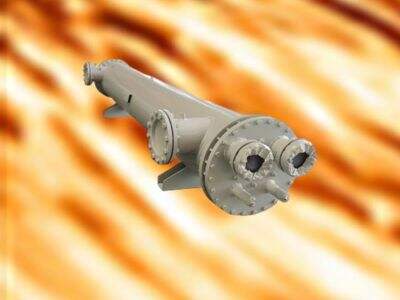Central air conditioning is an essential component of our comfort in our homes, given the significant and sometimes unbearable heat reached during the hottest months of summer. However, have you ever wondered how these systems work? In this post, we will look at the main parts that make up Zhuoli industrial air to air heat exchanger systems and how they work in unison to keep your home comfortable.
What You Need to Know About Central Air Conditioning Systems?
All air conditioners, including central AC systems consist of a few main parts that allow it to cool down your home. This comprises of the Compressor, Condenser, Evaporator and Expansion Valve. All of these parts are responsible for the cooling.
Think of the compressor as being like the heart in your body or an engine. The primary function of the compressor is to pump refrigerant gas around the system so that it can absorb and release heat. The hot refrigerant gas is then liquefied as it passes through the condenser. The most important part is the evaporator that helps in taking heat from air with the help of liquid refrigerant, and then this liquid refrigerant circulates to an expansion device. Another cooling component is the expansion valve, which functions to control the flow of refrigerant within the system while ensuring everything works well.
Efficient system optimization using part selection and design.
Selecting the appropriate components is paramount in designing an effective central air conditioning system. Picking top of the line pieces to go in unison are one way to get as much efficiency out of a system as possible. Which only means it can cool your home better with less energy which in turn saves you money on power bills.
The SEER rating is a key factor in choosing components. Seasonal Energy Efficiency Ratio measures the efficiency of an air conditioning system over the course of a cooling season. People can install a system that has the highest SEER rating possible by choosing parts with relatively high ratings.
Trade-off between energy efficient and performance of central AC Systems
The key to central air conditioning design is to optimize for both performance and energy efficiency. Of course, you want your system to cool your home properly, but keep in mind that you want it to be efficient and cost-effective at the same time.
A way to approach this is to go with components that are known and designed to work together, but we as builders don't always have control over what our customers are asking. Select components that work together to increase the overall system performance and minimize wasted energy.
Another method for balancing performance and energy efficiency is to maintain your systems correctly. For example, changing filters and maintaining your coils helps keeps the system working efficiently.
Looking at the role of ingredients in promoting even cooling throughout a place
Most importantly, central air conditioning systems are engineered to cool all areas of your home evenly. That way, you should always feel comfortable and cool no matter where in your home you are. To attain such a performance of uniform cooling, the components need proper selection and designing.
How big your system's components — such as the compressor and condenser, for example — are will affect how well your air conditioner cools your home. Components that are often undersized cannot work efficiently enough to cool your home. If, on the other hand you created your components to be too large, they also may require more power than necessary.
Component Placement – The other thing that you need to focus on is where are you going to put your components. If you place your components well, Zhuoli air compressor heat exchanger can ensure cool air spreads across the house and all rooms are at a comfy temp.
Key components combine to improve system-level reliability and robustness
Targeting the correct parts will not only help boost your unit to top efficiency and performance, but will also improve its overall reliability and lifespan as well. The more solid and better made your hardware component choices are, the longer your system will be able to operate properly.
In addition to this, regular service is important for maintaining the reliability and longevity of your system. Regular maintenance, such as cleaning your coils and checking levels of your refrigerant, is a way to catch those problems before they become an issue (and extend the life of your system).
To sum up, a central air conditioner is composed of various important components. So, learning how to keep those parts working in harmony, and understanding how system efficiency can be improved through the proper selection of components and design; all while maintaining that fine balance between performance (in Airflow CFM) and energy efficiency also taking a look at what role these parts play in keeping your cooling consistent (or not); will be key to getting your home cool, and making sure you have a reliable system that will provide you with the best comfort for years! By focusing on these components, Zhuoli can help you create an optimal central aircon heat exchanger system for your specific cooling requirements.
Table of Contents
- What You Need to Know About Central Air Conditioning Systems?
- Efficient system optimization using part selection and design.
- Trade-off between energy efficient and performance of central AC Systems
- Looking at the role of ingredients in promoting even cooling throughout a place
- Key components combine to improve system-level reliability and robustness

 EN
EN
 AR
AR
 HR
HR
 CS
CS
 DA
DA
 NL
NL
 FI
FI
 FR
FR
 DE
DE
 EL
EL
 HI
HI
 IT
IT
 JA
JA
 KO
KO
 PL
PL
 PT
PT
 RO
RO
 RU
RU
 ES
ES
 TL
TL
 IW
IW
 ID
ID
 LV
LV
 SL
SL
 UK
UK
 VI
VI
 HU
HU
 TH
TH
 TR
TR
 MS
MS
 GA
GA
 MK
MK
 YI
YI
 HY
HY
 AZ
AZ
 BN
BN
 LO
LO
 LA
LA
 MY
MY
 KK
KK




